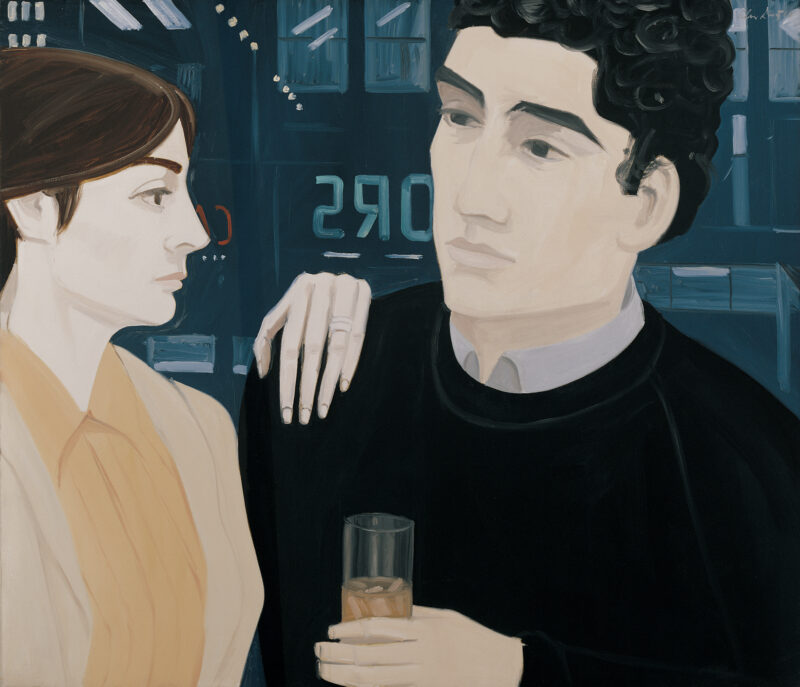
Frank and Sheyla Lima
Katz, Alex
1964
Artwork Information
-
Title:
Frank and Sheyla Lima
-
Artist:
Katz, Alex
-
Artist Bio:
American, born 1927
-
Date:
1964
-
Medium:
Oil on linen
-
Dimensions:
49 7/8 x 57 7/8 inches
-
Credit Line:
Wichita Art Museum, Museum purchase, Friends of the Wichita Art Museum and the National Endowment for the Arts Museum Purchase Plan
-
Object Number:
1978.61
-
Display:
Currently on Display
About the Artwork
Alex Katz’s double portrait of Frank and Sheyla Lima attending a cocktail party in the artist’s studio presents the perfect distillation of triumphal bohemia in 1960s’ New York. This was the decade when New York solidified its leadership of the international art world, when artists began to emerge as celebrities in the culture at large, and when loft studio cocktail parties replaced the working class Cedar Bar in Greenwich Village as the meeting place of elite cultural warriors. Without showing that he cared—eschewing the anguished touch of expressionism—and without wearing a Pop Art smirk—focusing upon his private life rather than upon appropriated media images—Katz communicated what it felt like to be part of the hippest of the hip, the coolest of the cool, a member of the new high command in the modern art’s war on philistine taste.
Katz is heir to the tradition of urbane flaneur realism inaugurated by the French proto-modernist Edouard Manet in his 1863 painting of Musique aux Twilleries. Like Manet, Katz loves to portray himself and his close friends, many of whom are noted art world icons, going about their habitual pursuits and entertainments. Frank Lima, whose close-up, cropped figure dominates Frank and Sheyla Lima, represented what was almost an archetype in the vanguard’s inner circles. Lima was a poet and disciple of poet and MOMA curator, Frank O’Hara. Lima also was a lothario, a self-confessed drug addict, an irrepressible engaging spirit, an exotic, which in Lima’s case was being Mexican American, and a familiar presence at all the best artists’ parties. Katz underscored his conceptualization of Frank and Sheyla Lima as a scene from New York’s floating life when he incorporated the couple into the multi-figured, panoramic composition of The Cocktail Party, 1965, in which the location, his studio at night with the neon letters ORS seen through the central window, and the format, cropped upper body views of figures across the picture plane, have been expanded.
Notes from Katz’s American predecessors also echo in Frank and Sheyla Lima. The idealization of the sitters, their monumental scale, and the flat, ritualized character of their gestures recall the ambitions of Kenneth Hays Miller, influential teacher, and leader of the 14th Street School of painting in the 1920s and 30s, who advocated the casting of New York street scenes in the formal poses of antiquity and the Renaissance. Katz’s delectation of the contradictory reflections in the night window—the conjunction of interior and exterior space, perspective and planar patterns pays distant homage to Manet and Degas, and, closer to home, obeisance to the Hamlet of New York’s night windows, Edward Hopper. Showing his respect for tradition while retaining his dark-glasses-cool, that is Alex Katz’s triumph.